Lotus Evora
| Lotus Evora | |
|---|---|
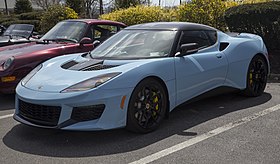 Lotus Evora 400 | |
| Overview | |
| Manufacturer | Lotus Cars |
| Production | 2009–present |
| Model years | 2010–present |
| Assembly | Hethel, Norfolk, United Kingdom |
| Designer | Russell Carr[1] |
| Body and chassis | |
| Class | Sports car (S) |
| Body style | 2-door coupé 2-door 2+2 coupé |
| Layout | Transverse mid-engine, rear-wheel drive |
| Related | Lotus 3-Eleven |
| Powertrain | |
| Engine | 3.5 L Toyota 2GR-FE V6[1][2] 3.5 L Toyota 2GR-FE Supercharged V6 |
| Transmission | 6-speed Aisin AI manual[1] 6-speed Aisin AI IPS automatic |
| Dimensions | |
| Wheelbase | 2,575 mm (101.4 in)[1] |
| Length | 4,350 mm (171 in) |
| Width | 1,848 mm (72.8 in) |
| Height | 1,229 mm (48.4 in) |
| Kerb weight | 1,248 kg (2,751 lb)–1,442 kg (3,179 lb) |
| Chronology | |
| Predecessor | Lotus Excel |
The Lotus Evora is a sports car produced by British car manufacturer Lotus.[1] The car, which was developed under the project name Project Eagle, was launched as the Evora on 22 July 2008 at the British International Motor Show.[3] The Evora S was launched in 2010 with a supercharged 3.5-litre V6. A facelifted and more powerful Evora 400 model was unveiled at the 2015 Geneva Motor Show,[4] followed by a more powerful variant, the Evora GT430 which was unveiled in 2017.[5]
The Lotus Evora is based on the first all-new vehicle platform from Lotus Cars since the introduction of the Lotus Elise in 1995 (the Exige and the 2006 Europa S are both derivatives of the Elise).[6][7] The Evora was planned to be the first vehicle of three to be built on the same platform,[8] although as of 2018 it is still the only one. The sales target was 2,000 cars per year, with prices between £45,000 and just over £50,000,[1] and in America from the beginning of 2010.[9]
Overview[edit]
The Evora is the first product of a five-year plan started in 2006 to expand the Lotus line-up[2] beyond its current track-specialized offerings, with the aim of making Evora somewhat of a more practical road car that would appeal to the mainstream.[10] As such it is a larger car than recent Elise models and its derivatives (Exige, Europa S, etc.), with an unladen weight of 1,383 kg (3,049 lb), with the automatic version weighing in at 1,442 kg (3,179 lb). It is currently the only Lotus model with a 2+2 configuration, although it has been announced that it will also be offered in a two-seater configuration, referred to as the "Plus Zero" option.[1] It, along with the BMW i8, are the only 2+2 mid-engined coupés on sale. This, however is the only one out of the two cars that has no hybrid system. The interior is larger to allow taller persons to fit, such as the then Lotus CEO Mike Kimberley,[1] and two 6'5" (195.6 cm) tall people.[11]
The cooled boot behind the engine is large enough to fit a set of golf clubs, although Lotus Design Head Russell Carr denies that this was intentional.[1] Lotus intends the Evora to compete with different market sectors including the Porsche 991.
Nomenclature[edit]
The name "Evora" keeps the Lotus tradition of beginning model names with an "E". The name is derived from the words Evolution, VOgue, and auRA.[12] Other names considered were Eagle, Exira and Ethos; Exira was rejected as it was considered not good enough and the other two because it would be difficult for Lotus to claim them as a trademark.[2] The name "Evora" sounds similar to Évora, which is the name of a Portuguese city and UNESCO World Heritage Site, in Portugal.
Specifications[edit]
The Evora is equipped with a mid-mounted, transverse, Toyota-sourced 3.5-litre 24-valve V6 engine. The Evora S uses the same engine but with a supercharger. Both versions are available with a 6-speed manual or 6-speed automatic with "Intelligent Precision Shift" by Aisin.[13] The Evora has a drag coefficient of Cd=0.337.[1] The Evora is constructed on a lightweight aluminum tub with an additional front crash structure also made from aluminum, along with a steel rear sub-frame which houses the drivetrain. The chassis was designed to utilize bespoke 6000 series alloy extrusions which are then bonded with an epoxy based adhesive, and subsequently riveted together in order to increase torsional rigidity. The Evora also features forged aluminium double wishbone suspension with Bilstein high-performance gas dampers and Eibach coaxial coil springs. Steering is by hydraulically assisted power steering.
| Model | Power | Torque | Emissions CO 2 |
Top speed | Acceleration 0–60 mph (0–97 km/h) |
Economy (combined) |
|---|---|---|---|---|---|---|
| Evora | 280 PS (206 kW; 276 bhp) at 6,400 rpm | 350 N⋅m (258 lb⋅ft) at 4,600 rpm | 217 g/km | 163 mph (262 km/h) | 4.8 secs | 30.3 mpg‑imp (9.3 L/100 km; 25.2 mpg‑US) |
| Evora IPS | 280 PS (206 kW; 276 bhp) at 6,400 rpm | 350 N⋅m (258 lb⋅ft) at 4,600 rpm | 210 g/km | 159 mph (256 km/h) | 5.0 secs | 31.4 mpg‑imp (9.0 L/100 km; 26.1 mpg‑US) |
| Evora S | 350 PS (257 kW; 345 bhp) at 7,000 rpm | 400 N⋅m (295 lb⋅ft) at 4,500 rpm | 229 g/km | 178 mph (286 km/h) | 4.4 secs | 28.7 mpg‑imp (9.8 L/100 km; 23.9 mpg‑US) |
| Evora S IPS | 350 PS (257 kW; 345 bhp) at 7,000 rpm | 400 N⋅m (295 lb⋅ft) at 4,500 rpm | 224 g/km | 167 mph (269 km/h) | 4.5 secs | 29.3 mpg‑imp (9.6 L/100 km; 24.4 mpg‑US) |
| Evora 400 | 406 PS (299 kW; 400 bhp) at 7,000 rpm | 410 N⋅m (302 lb⋅ft) at 3,500 rpm | 225 g/km | 186 mph (299 km/h) | 4.1 secs | 29.1 mpg‑imp (9.7 L/100 km; 24.2 mpg‑US) |
| Evora 400 IPS | 406 PS (299 kW; 400 bhp) at 7,000 rpm | 410 N⋅m (302 lb⋅ft) at 3,500 rpm | 230 g/km | 174 mph (280 km/h) | 4.1 secs | 29.1 mpg‑imp (9.7 L/100 km; 24.2 mpg‑US) |
| Evora Sport 410 | 416 PS (306 kW; 410 bhp) at 7,000 rpm | 420 N⋅m (310 lb⋅ft) at 3,500 rpm | 225 g/km | 190 mph (306 km/h) | 4.2 secs | 29.1 mpg‑imp (9.7 L/100 km; 24.2 mpg‑US) |
| Evora Sport 410 IPS | 416 PS (306 kW; 410 bhp) at 7,000 rpm | 420 N⋅m (310 lb⋅ft) at 3,500 rpm | 230 g/km | 174 mph (280 km/h) | 4.1 secs | 29.1 mpg‑imp (9.7 L/100 km; 24.2 mpg‑US) |
| Evora GT410 Sport | 416 PS (306 kW; 410 bhp) at 7,000 rpm | 440 N⋅m (325 lb⋅ft) at 4,500 rpm | 234 g/km | 190 mph (306 km/h) | 3.9 secs | 29.1 mpg‑imp (9.7 L/100 km; 24.2 mpg‑US) |
| Evora GT410 Sport IPS | 416 PS (306 kW; 410 bhp) at 7,000 rpm | 450 N⋅m (332 lb⋅ft) at 4,500 rpm | 234 g/km | 174 mph (280 km/h) | 4.0 secs | 29.1 mpg‑imp (9.7 L/100 km; 24.2 mpg‑US) |
| Evora GT | 421 PS (310 kW; 415 bhp) at ? | 429–450 N⋅m (316–332 lb⋅ft) at ? | 274 g/km | 188 mph (303 km/h) | 3.8 secs | 26 mpg‑imp (11 L/100 km; 22 mpg‑US) |
| Evora GT430 Sport | 436 PS (321 kW; 430 bhp) at 7,000 rpm | 440 N⋅m (325 lb⋅ft) at 4,500 rpm | 234 g/km | 196 mph (315 km/h) | 3.7 secs | 29.1 mpg‑imp (9.7 L/100 km; 24.2 mpg‑US) |
| Evora GT430 Sport IPS | 436 PS (321 kW; 430 bhp) at 7,000 rpm | 450 N⋅m (332 lb⋅ft) at 4,500 rpm | 234 g/km | 174 mph (280 km/h) | 3.6 secs | 29.1 mpg‑imp (9.7 L/100 km; 24.2 mpg‑US) |
Evora S[edit]
In 2010, Lotus unveiled a new variant of the Evora which was much more focused and more powerful than the regular version, called the Evora S. The "S" in the name stood for "Supercharged". The car had the same standard design but was more powerful, now producing 345 hp (257 kW; 350 PS) and 295 lb⋅ft (400 N⋅m), thanks to a new supercharger manufactured by Harrop.[14] The exhaust of the car was also replaced with a single-tubed exhaust system. The suspension's dampers have been re-calibrated to suit the vehicle's new suspension characteristics. The steering has also been re-calibrated. The car's price was also raised, now at US$77,175.
The car was able to do 0–60 mph (0–97 km/h) in 4.6 seconds, with a top speed of 172 mph (277 km/h).
Lotus ceased production of the S in 2014 and later replaced it and the regular car with a new variant called the Evora 400 in 2015.
The Romanian Police have a Lotus Evora S in their line-up as of 2012.[15]
Evora 400[edit]
The Evora 400 is a new variant that replaces the Evora and the Evora S.[16] The "400" in the name is a reference to the vehicle's horsepower rating. The improved engine output of 400 hp (298 kW; 406 PS) and 302 lb⋅ft (409 N⋅m) is due to an intercooled supercharger developed by Edelbrock. The Evora 400 has an all-new body kit design, which helps produce an extra 23 kg (51 lb) of downforce. The exhaust now has a new driver-activated system which allows the driver to increase the roar of the exhaust. The interior has been slightly revised, notably with narrower sills for simplified entry and exit, a new dashboard design and centre console design. The wheel set is also different, offering new forged wheels as an option. The wing has been changed into a split rear wing. The car weighs 1,395 kg (3,075 lb).
Acceleration from 0–60 mph (0–97 km/h) is at 4.1 seconds, 0.5 seconds faster than the S variant. Top speed is at 186 mph (299 km/h).
Evora Sport 410[edit]
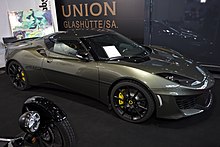
At the 2016 Geneva Motor Show, Lotus revealed the Evora Sport 410, a slightly enhanced version of the 400.[17] The car's 3.5-liter Toyota-derived V6 puts out an extra 10 hp (7 kW; 10 PS), for a total of 410 hp (306 kW; 416 PS). The torque is also up, now at 310 lb⋅ft (420 N⋅m).
The design stays the same, as it is only a variant of the Evora 400. The weight falls drastically, and is now at 1,325 kg (2,921 lb).
The performance figures become faster, thanks to higher horsepower and lower weight. 0–60 mph (0–97 km/h) is now at 3.9 seconds, and top speed is now at 190 mph (306 km/h). However, if the IPS automatic transmission system is used, top speed settles at 174 mph (280 km/h).
Evora GT430[edit]
In 2017, Lotus unveiled the most powerful variant of the Evora and in turn the fastest road legal Lotus ever made, the Evora GT430. It is the part of an entirely new range in the Evora family, called the performance range.[18] The car's 3.5 liter Toyota-derived V6 horse power is up from the other models at 430 hp (321 kW; 436 PS), thanks to an Edelbrock supercharger and a titanium exhaust system. The torque figures are also up as compared to previous variants 325 lb⋅ft (441 N⋅m) for manual transmission cars and 332 lb⋅ft (450 N⋅m) for cars with automatic transmission due to launch control and fast gear change ratios. This version is also the lightest and tips the scale at 1,258 kg (2,773 lb) for manual transmission cars and 1,310 kg (2,888 lb) for automatic transmission cars. The cars with automatic transmission weigh more due to the added weight of the gear box and its cooling system. Top speed also varies for manual and automatic cars due to added weight and gearbox differences and are rated at 174 mph (280 km/h) for automatic cars and 190 mph (306 km/h) for manual transmission cars. Due to the increased torque the automatic transmission cars are a little bit quicker than the manual transmission cars with 0–60 mph (0–97 km/h) times of 3.6 seconds(automatic) and 3.7 seconds(manual) respectively. It also generates more downforce (250 kg at 190 mph) than its previous variants. Only 60 units of the Evora GT430 will be produced. Exterior wise, the car has a new and aggressive body kit that features a bigger carbon fiber rear wing, bigger air intakes, forged aluminum wheels, poly carbonate lights and most of the body work made from carbon fiber in order to keep the weight low. The interior is also stripped down in order to save weight and removes the rear seats along with the addition of carbon fiber components and racing seats, it also features a plaque signifying the car's production number. The creature comforts are retained with air-conditioning included as standard.
Evora GT430 and GT410 Sport[edit]
Later in 2017, Lotus unveiled another variant of the Evora GT430 called the Evora GT430 sport. It features a more aero dynamic body and removes the GT430s rear wing for smoother airflow and to reduce drag. This helps increase the top speed to 196 mph (315 km/h) with the automatic version having a top speed of 174 mph (280 km/h) due to added gearbox weight. The sport version is also lighter than the regular version and tips the scales at 1,300 kg (2,866 lb) for the automatic version and 1,248 kg (2,751 lb) for the manual version.
To celebrate its 70th anniversary Lotus unveiled the new Evora GT410 Sport, a more subtle GT430. Available as a two-seater or 2+2 the GT410 Sport takes the GT430's basic shape and adds new composite front and rear body panels minus some of the 430's higher downforce pieces for a more-subtle shape. The revised front panel has bigger carbon fiber air ducts, the idea being to more-efficiently move air around the front wheels, cutting turbulence and drag. Deeper front and rear splitters and carbon ducts behind the rear wheels add downforce. In total downforce increases 211 pounds. Carbon pieces also include the front access panel, roof panel and rear decklid. The same 3.5-liter V6 powers the car, producing 410 hp and 310 lb ft of torque, good enough for a 3.9-second zero-to-60 sprint with a manual and four seconds flat with the six-speed automatic. The new car weighs just 2,859 pounds, 62 pounds less than the 410.
Evora GT[edit]
In June 2019, for the 2020 model year, Lotus introduced the Evora GT for only the North American market. This car has a Supercharged 3.5-liter V6 like the rest of the line, but it has been tuned to produce 416 bhp (310 kW; 422 PS) and 317 lb⋅ft (430 N⋅m) for the manual and 332 lb⋅ft (450 N⋅m) for the automatic; the manual gets a standard Torsen Rear Differential. Regardless of transmission choice the 0–60 mph (0–97 km/h) time is estimated at 3.8 seconds. Top speed is different between the two with the automatic capable of 174 mph (280 km/h) and the manual having a top speed of 188 mph (303 km/h). It uses some of the same aero bits from the Evora GT430 except for the big carbon fiber wing, but no matter what, all the aero on this car helps it produce 141 lb (64 kg) at maximum speed. This variant of the Evora weighs between 3,104 lb (1,408 kg) and 3,199 lb (1,451 kg) depending on which options are selected. The optional Carbon Pack includes a carbon fiber roof, rear tailgate, and front access panel which reduces weight by 49 lb (22 kg). The optional titanium exhaust reduces weight further by 22 lb (10 kg). Choosing the manual transmission over the automatic saves an additional 24 lb (11 kg).
Special editions[edit]
Evora 414E Hybrid[edit]
In 2012, Lotus produced a prototype hybrid Evora, called 414E. Developed as a demonstration project for the UK Government's Technology Strategy Board, the range-extended electric coupe emits 55 g/km CO
2 and has an electric only driving range of 30 miles.[19] When combined with the 3-cylinder 1.2-litre (1198 cc) petrol engine acting as a generator (as a similar manner to the Chevrolet Volt), the 414E has a range of 300 miles. The 414E formed the basis of the Infiniti Emerg-e concept car.[20]
Evora S Carabinieri[edit]
In July 2011, Lotus Cars donated two Evora S models with special equipment to the Carabinieri, the Italian gendarmerie. Lotus will take care of the maintenance of the cars and the training for the drivers.
Evora GTE Road Car[edit]
The Evora GTE road version is a variant of the Evora that was built to permit its racing variant to be able to race under GT3 and LM GTE regulations.[21] There were only 25 of these special editions built. The road car uses the race car's engine, and produces 438 hp (327 kW; 444 PS), making it the most powerful Lotus ever made. The weight of the car has been lowered drastically, and is now at 1,277 kg (2,815 lb).
Motorsport[edit]
LM GTE[edit]
During the 2011 Geneva Motor Show, Lotus announced the Evora Enduro GT concept, as a follow up to the Type 124 and GT4 race cars. Lotus is aiming for this car to enter into the LM GTE category by mid-2011, with a 444 hp (331 kW; 450 PS) Toyota-supplied V8.
Lotus entered two Evoras at the 2011 24 Hours of Le Mans, which were run by the Jetalliance Racing team. Despite overheating issues during practice and qualifying, car No. 65 finished 22nd overall, completing 295 laps, whilst car No. 64 retired after 126 laps.
In 2012, Jetalliance Racing failed to negotiate a deal to run the cars in Europe; instead, Alex Job Racing chose to run a LM GTE in the American Le Mans Series. Alex Job Racing did not get a good outcome from this however, and the car was later replaced by a Ferrari 458 Italia GT2 as the main race car for the team.
Group GT4[edit]
Ollie Hancock won the Nürburgring round of the 2010 GT4 European Cup season. A team including Johnny Mowlem, Stefano D'Aste and Gianni Giudici finished on the podium in the 2011 Dubai 24 Hour endurance race.[22]
In 2011, Stefano D'Aste was the first Italian driver after Mario Andretti to win on Circuit Park Zandvoort with an official Lotus car and the car was the Evora GT4. D'Aste was in first position of the GT4 European Series till the last race but due to a problem that occurred to the engine he got a third position in the series, which was still good, considering that it was the first year that the official Lotus Evora GT4 took part to a full season competing with cars like the BMW M3, Porsche 911, Aston Martin Vantage GT4, and the Chevrolet Camaro; cars that are much more competitive than the Evora. The car proved capable of keeping up with these cars.
In 2012, Richard Adams, David Green and Martin Byford won the Britcar MSA British Endurance Championship in a Lotus Evora GT4.
GT300[edit]
Mooncraft runs a Lotus Evora in the GT300 class of the Japanese Super GT series. However, the car isn't really an Evora but rather a silhouette racer using on the Dome-GTA M101 "Mother Chassis" with Evora lookalike bodywork and some Evora bits. As with all current Mother Chassis cars, it's powered by the Nissan VK45DE naturally aspirated V8.
Reception[edit]
The Evora received several accolades at its launch from the British motoring press, including: Britain's Best Driver's Car 2009 from Autocar[23] and Car of the Year 2009, from Evo.[24]
The car was reviewed by Jeremy Clarkson on the television show Top Gear. Overall his review was positive: he was very happy with the performance, handling and comfort. He was extremely impressed with the ride comfort even after driving it into a field saying "Here, the suspension is taking the knocks, not me." and described the car as "the only car I've ever driven, ever, which is a killer attack dog and an old sofa". However, he considered the rear seats to have not enough legroom, the interior felt tinny and the satellite navigation was sub-optimal.[25]
References[edit]
- ^ Jump up to: a b c d e f g h i j "Lotus Evora". EVO. Dennis Publishing. 22 July 2008. Retrieved 22 July 2008.
- ^ Jump up to: a b c "London show: Lotus Evora". Autocar. Haymarket Media. 22 July 2008. Retrieved 22 July 2008.
- ^ "2009 Lotus Evora revealed: Project Eagle arrives". Leftlane News. 22 July 2008. Retrieved 22 July 2008.
- ^ "Evora 400". Top Gear. 18 February 2015. Retrieved 18 February 2015.
- ^ "Evora GT430 is the fastest production Lotus ever". road and track. 6 September 2017. Retrieved 6 September 2017.
- ^ Holmes, Jake (March 2008). "2008 Lotus Europa SE – Auto Shows". Car & Driver. Hachette Filipacchi Media U.S. Retrieved 26 August 2009.
- ^ Mitani, Sam (August 2009). "Driving Impression: 2010 Lotus Evora". Road & Track. Newport Beach, California: Hachette Filipacchi Media U.S. 60 (12): 52–55. Archived from the original on 11 May 2009. Retrieved 26 August 2009.
- ^ "London show: Lotus Evora". Autocar. Haymarket Group. 22 July 2008. Retrieved 26 August 2009.
- ^ Davis, Matt (13 May 2009). "The Baby Ferrari That Ferrari Refuses To Build". Edmunds.com. Retrieved 26 June 2009.[dead link]
- ^ "2010 Lotus Evora – Test drive and new car review – 2010 Lotus Evora". Cars.about.com. 16 June 2011. Retrieved 28 January 2012.
- ^ "Lotus Evora in Details at BIMS". AutoSpies.com. 23 July 2008. Retrieved 24 July 2008.
- ^ Mitani, Sam (August 2009). "2010 Lotus Evora". Road & Track. Hachette Filipacchi Médias. 60 (12): 52–55. Retrieved 9 August 2009.[permanent dead link]
- ^ Adcock, Ian (October 2011). "Lotus Evora IPS". Road & Track. 63 (2): 39.
- ^ "2011 Lotus Evora S – Short Take Road Test". Retrieved 24 March 2017.
- ^ "Poliţia Română, dotată cu Lotus Evora S. Vezi aici cum arată maşina | Romania Libera" (in Romanian). Retrieved 13 February 2018.
- ^ "Evora 400 | Lotus Cars". www.lotuscars.com. Retrieved 24 March 2017.
- ^ "Evora Sport 410 | Lotus Cars". www.lotuscars.com. Retrieved 25 March 2017.
- ^ "Evora GT430 | Lotus cars". www.lotuscars.com. Retrieved 6 September 2017.
- ^ Clarke, Paul (22 October 2012). "Lotus Evora 414E: behind the wheel of an electric sports car". The Guardian. Retrieved 22 January 2015.
- ^ Holloway, Hilton (1 October 2012). "First drive review: Lotus Evora 414E Hybrid". Autocar. Retrieved 22 January 2015.
- ^ "New hardcore Lotus Evora GTE". Evo. Retrieved 25 March 2017.
- ^ "Lotus Evora GT4 Endurance gets on the podium in Dubai". Paul Tan's Automotive News. 19 January 2011.
- ^ "Evora is UK's Best Driver's Car". Autocar.co.uk. 14 August 2009. Retrieved 10 October 2010.
- ^ Barker, John (22 November 2010). "Lotus Evora Supercharged review". Evo. Retrieved 22 January 2015.
- ^ Presenters: CLARKSON, J., HAMMOND, R., MAY, J. (21 June 2009). "Lotus Evora road test". Top Gear. Series 13. Episode 1. BBC. BBChttps://www.youtube.com/watch?v=ZHcLP0wvENQ
|transcripturl=missing title (help). Retrieved 18 January 2011.
External links[edit]
| Wikimedia Commons has media related to Lotus Evora. |
- Official website
- SELOC TechWiki – Evora
- Anthology of Videos detailing the Evora model development and evolution
| hide | |||||||||||||||||||||||||||||||||||||||||||||||||||||||||||||||||||||||||
|---|---|---|---|---|---|---|---|---|---|---|---|---|---|---|---|---|---|---|---|---|---|---|---|---|---|---|---|---|---|---|---|---|---|---|---|---|---|---|---|---|---|---|---|---|---|---|---|---|---|---|---|---|---|---|---|---|---|---|---|---|---|---|---|---|---|---|---|---|---|---|---|---|---|
| Type | 1950s | 1960s | 1970s | 1980s | 1990s | 2000s | 2010s | 2020s | |||||||||||||||||||||||||||||||||||||||||||||||||||||||||||||||||
| 0 | 1 | 2 | 3 | 4 | 5 | 6 | 7 | 8 | 9 | 0 | 1 | 2 | 3 | 4 | 5 | 6 | 7 | 8 | 9 | 0 | 1 | 2 | 3 | 4 | 5 | 6 | 7 | 8 | 9 | 0 | 1 | 2 | 3 | 4 | 5 | 6 | 7 | 8 | 9 | 0 | 1 | 2 | 3 | 4 | 5 | 6 | 7 | 8 | 9 | 0 | 1 | 2 | 3 | 4 | 5 | 6 | 7 | 8 | 9 | 0 | 1 | 2 | 3 | 4 | 5 | 6 | 7 | 8 | 9 | 0 | |||
| Sports racer | Mark VIII | Mark IX | Eleven | 15 | 17 | 19 | 23 | 30 | 40 | 47 | 62 | ||||||||||||||||||||||||||||||||||||||||||||||||||||||||||||||
| Mark VI | Seven | 340R | 2-Eleven | 3-Eleven | |||||||||||||||||||||||||||||||||||||||||||||||||||||||||||||||||||||
| Sports car | Evija | ||||||||||||||||||||||||||||||||||||||||||||||||||||||||||||||||||||||||
| Roadster | Elan | Elan M100 | Elise | Elise | |||||||||||||||||||||||||||||||||||||||||||||||||||||||||||||||||||||
| Coupé | Elite | Elan | Exige | Exige | Exige | ||||||||||||||||||||||||||||||||||||||||||||||||||||||||||||||||||||
| Eclat | Excel | Evora | |||||||||||||||||||||||||||||||||||||||||||||||||||||||||||||||||||||||
| Grand tourer | Elan +2 | Elite | |||||||||||||||||||||||||||||||||||||||||||||||||||||||||||||||||||||||
| Europa | Esprit | Europa S | |||||||||||||||||||||||||||||||||||||||||||||||||||||||||||||||||||||||
| Saloon | Ford Cortina Lotus | Ford Cortina Lotus | Carlton/Omega | ||||||||||||||||||||||||||||||||||||||||||||||||||||||||||||||||||||||
| Racing cars | |||||||||||||||||||||||||||||||||||||||||||||||||||||||||||||||||||||||||
| Related cars | |||||||||||||||||||||||||||||||||||||||||||||||||||||||||||||||||||||||||
| Concept cars | |||||||||||||||||||||||||||||||||||||||||||||||||||||||||||||||||||||||||
| Key figures | |||||||||||||||||||||||||||||||||||||||||||||||||||||||||||||||||||||||||
| Group Lotus | |||||||||||||||||||||||||||||||||||||||||||||||||||||||||||||||||||||||||
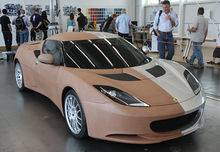
_(cropped).jpg)
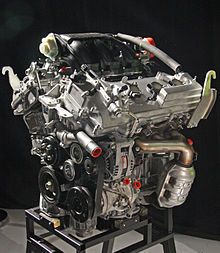


.jpg)
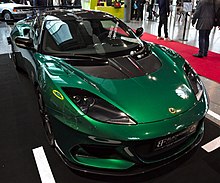
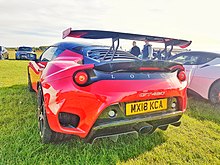
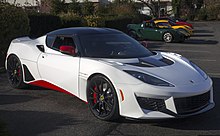
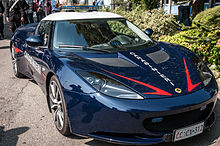
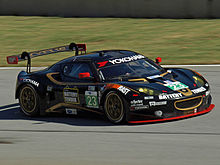

_(36961467351).jpg)